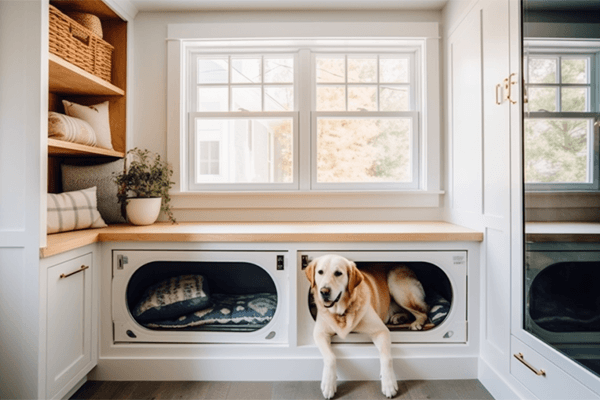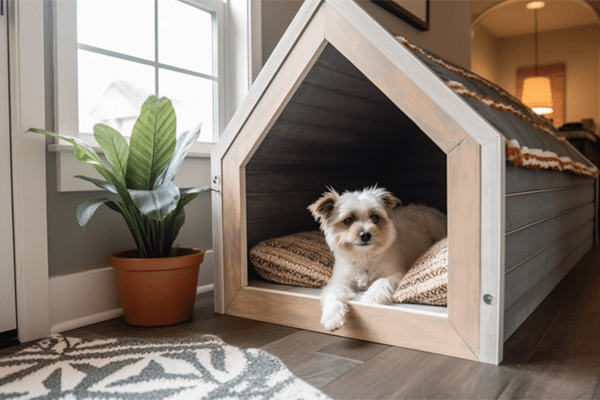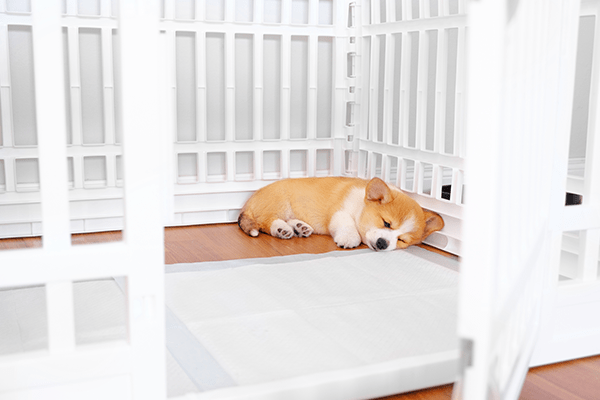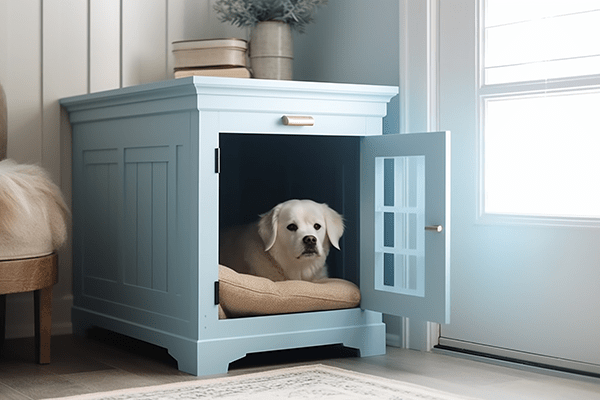Give your fur baby their own special place in your home.
If you have a dog, you’ll know by now that they’re happiest when they’re with you.
Some of us are comfortable sharing our sofas and beds with our four-legged friends, but many of us aren’t. If you identify with the latter, but still want your dog to have a safe, comfortable place to call their own, then an indoor dog house may be the ideal solution. It allows your pet to stay close to the family, while also giving them a cosy, den-like space to retreat to when they’re scared, tired or over-excited.
There are three main stages to a project like this. We’ll take you through them so you can build the perfect place for your pooch.
1. Plan
It may be tempting to hop in the car right now and drive to your local hardware store, but there are a few things to think about first. Where will the dog house go and how big it should be? You also need to factor in things like your pet’s personality, what materials you want to use and what will make them comfortable. After all, you want them to like being in their new space!
Where? Many people have a closet under the stairs that’s usually filled with junk. How about clearing it out and giving it to your dog? Dogs love to be at the centre of household activity, so consider the corner of commonly used areas such as the living room, kitchen, study or bedroom.
How big? The house should be just big enough for your pet to stand up, turn around, and lay down comfortably. Spaces that are too small can make your dog feel anxious and trapped. The ideal size will replicate the closeness of a den without being too cramped.
Your dog’s personality. Your dog may take to their space immediately, but this won’t always happen. Anxious or timid dogs may need some support to adapt. Think about the time and effort you may need to train your dog to feel safe in their new house.
Comfort. Like us, dogs like their spaces to be warm, well ventilated and with visibility over the surrounding area. Therefore, you may want to re-think the traditional kennel design, which is dark, enclosed, with a single entry/exit point. Also consider how cold or hot the space can get throughout the year.
2. Design and build
Now that you’ve had a good think about your pet’s needs, it’s time to decide on a design. When it comes to indoor dog houses, there are a few to pick from.
An unused space
When adapting an existing space, make sure it is well ventilated and can be easily cleaned, as they are much-loved breeding ground for fleas. Also, make sure the walls and floors are sanded down and painted to prevent splinters as these spaces are often made from untreated wood.
A free-standing structure
This is the option that requires the most design and construction effort. You may have a clear idea of what you want to build, or you can download a DIY plan online. Don’t feel bound to a traditional dog kennel design as an indoor house doesn’t need to protect your pet from the elements. You may also want to consider a colour scheme that is complementary to the room’s décor. An online tool like Coloursmith can help you find and match paint colours.
An enclosed pen
An enclosed pen suits reactive, excitable dogs who need to be contained when you go out or have visitors. With no roof, but generously spaced walls and slats, the space gives dogs visibility, airflow and a sense of security. And the doors mean you don’t come back home to a chewed sofa!
A repurposed side table
Ideal for small dogs, this kind of house requires minimal effort for maximum impact. Cute and compact, you can get creative with how you upcycle your old furniture.
3. Paint and furnish
Once the design and build are finished, you’ll need to paint your new dog house. As a general rule, pick interior colours that can be wiped clean or avoid bright whites and colours that can show dirt easily. Also, make sure you have the right tools for a professional finish.
Most importantly of all, make sure the interior house paint you use is non-toxic. Dogs and puppies will engage in destructive chewing occasionally, so build your house with this in mind. Pet friendly paints are water-based and transparent with their ingredients list. They should also be free of the following ingredients:
- Volatile organic compounds (VOCs) – these are chemical compounds commonly used in the manufacturing process. It’s also found in furniture polish and nail polish remover.
- Creosote – this is a dark brown oil used as a wood preservative and is distilled from coal tar.
- Any heavy metals.
Even when you’re using pet safe paints, keep your dog away from their new house until the paint dries and ensure the room is well ventilated. Stay alert for symptoms such as dizziness, vomiting, eye and skin irritation.

 Back to Colour Together page
Back to Colour Together page



